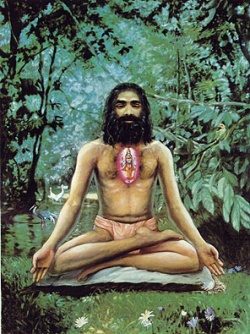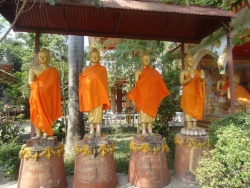When Mao came face to face with his destiny at Buddhist temple
Indian Express, Aug 14, 2011
Mt Wutai, China -- Mao Zedong, founder of China's Communist Party, rarely visited temples as he remained steadfast with his atheist ideology, but his visit to the sacred Buddhist Mountain here left a legend of how a fortune card he picked accurately predicted his destiny. On a relaxed tour of this 1200 years old Buddhist shrine after successfully leading the revolution in 1949, Mao picked up a fortune card no: 8341 out of the pack offered to him by Buddhist monks and insisted on knowing what it foretold. Much to his chagrin the monks maintained stony silence. Their refusal to speak despite his persistence made him leave the place in a huff. It later turned out that the card predicted that he would live for 83 years and his rule as a leader of the party would last 41 years.
Mao was born in 1893 and died in 1976 on the 83rd year of his life. He took over the leadership of the ruling Communist Party of China, (CPC) and the Red Army in 1935 during the Long March and remained its leader till his death, which makes it a leadership of 41 years. True or false, this legend of Mao's destiny is on the lips of scores of official tourist guides here on this picturesque mountain. It is interesting to note how much China has moved away from Mao's era and has aggressively marketed the spiritual importance of the Buddhist shrine using his own legend.
For over 1200 years, Wutai Mountain has been China's most sacred Buddhist place because it was where the highly revered "Manjusri, the Bodhisattva of wisdom", one of prominent disciples of Lord Buddha, once lived and taught Buddhism. The atmosphere in the shrines easily reminds one of any Indian temple, with hundreds of devotees seen going around it chanting prayers, while others lighting fragrant sticks before the giant bronze statues of Lord Buddha. This mountain is regarded as one of the four holy Buddhist Mountains in China, with 360 temples built on it dating back to the Tang Dynasty (618-907) after Buddhism came to China from India.
Currently only 47 temples exist here. Broadly imbibing the Hindu and Tibetan Buddhist traditions is a massive white pagoda which can be seen from several miles. The pagoda, in Nepalese style, has a base circumference of 83.3 meters and is 75.3 meters high. It reportedly contained a small India-made iron stupa, where some remains of Sakyamuni (One of the names of Lord Buddha) are kept. Mt Wutai lies in Wutai County in Xinzhou Region of China's flourishing Shanxi Province which has taken a prominent spot on China's burgeoning tourist map.
Besides the temple, the province which has emerged as the power house of China catering power supply to top cities like Beijing, also houses the famous 'Pingyao' -- the ancient city which is a UNESCO world heritage site. The city dating back to 557 BC-532 BC is regarded as the "outstanding city model" of Han nationality styled during Ming and Qing dynasties. Hans constitute over 95 per cent of Chinese population.
Plush with houses and places built with ancient Chinese style architecture, the walled city has age-old Buddhist temples, China's first Bank as well as an old prison, depicting torture kits extensively used by the rulers to keep the population under check. The place which has emerged on top of China's tourist map with modern hotel facilities designed to give the experience of living in the ancient houses is attracting lakhs of tourists every year. Places such as this helped China emerge as one of the top three tourist destinations in the world last year raking up billions of dollars in tourist inflows. With 56 million tourist arrivals last year, China edged out Spain, to become the world's third most visited country, behind France (79 million) and the United States (61 million).

